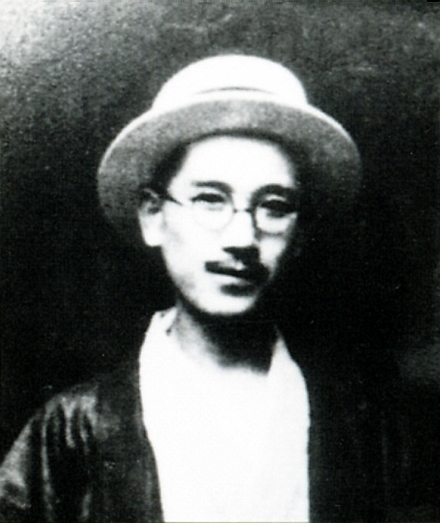- Kasai Zenzō
Infobox Writer
name = Kasai Zenzō

caption = Kasai Zenzō
birthdate = birth date|1887|1|16|df=y
birthplace =Hirosaki, Aomori ,Japan
deathdate = death date and age|1928|7|23|1887|1|16|df=y
deathplace =Tokyo ,Japan
occupation = Writer
genre = novels
movement =I Novel
notableworks =
influences =
influenced =
footnotes = Japanese name|Kasainihongo|Kasai Zenzō|葛西善蔵|Kasai Zenzo|extra=(16 January 1887 -23 July 1928 was a Japanese novelist active inTaishō period Japan .Early life
Kasai Zenzō was born in what is now part of Hirosaki city,
Aomori prefecture , as the eldest son of a rice merchant. His parents died when he was two years old, and he was shuffled to relatives aroundHokkaidō and Aomori. He was only able to receive a primary school education. His relatives were resolved that he should become aBuddhist priest, but he moved toTokyo at the age of 15 in order to find work, and to pursue a literary career. After working as an employee of a railroad, and as a forester, he saved up enough money to take classes atToyo University andWaseda University , he met aspiring authorHirotsu Kazuo , and ended up as a disciple of authorTokuda Shusei . He studiedphilosophy , literature andEnglish literature , but dropped out of school when he felt that he had learned enough (and when his money ran out).Literary career
In 1912, Kasai joined
Funaki Shigeo and Hirotsu Kazuo in founding a newliterary magazine , "Kiseki" ("Miracle"), and contributed various works to it. Kasai wrote novels in an autobiographical naturalist style, which was a forerunner of the "I novel ". In 1918, he published "Ko o tsuretete" ("With Children in Tow") in the Waseda Bungaku magazine, which gained him wide recognition. In his novels, he described his struggles against poverty, illness,alcoholism , and loneliness. His major works include "Kanashiki chichi" ("Mourning Father", 1912), "Akuma" ("Devil", 1912), and "Kohan Nikki" ("Lakeside Diary", 1924).He lived in Kamakura,
Kanagawa prefecture for many years, due to the presence of many fellow writers, and because the sea air was considered healthier for his weak lungs. He died in Tokyo at the age of 41 after a long struggle againsttuberculosis . His grave is at the temple ofKencho-ji in Kamakura.ee also
*
Japanese literature
*List of Japanese authors References
* Fowler, Edward. "The Rhetoric of Confession: Shishosetsu in Early Twentieth-Century Japanese Fiction". University of California Press (1992). ISBN-10: 0520078837
* Keaveney, Christopher. "The Subversive Self in Modern Chinese Literature: The Creation Society's Reinvention of the Japanese Shishosetsu". Palgrave Macmillan (2004). ISBN-10: 1403964661External links
* [http://www.aozora.gr.jp/index_pages/person984.html e-texts of works] at
Aozora Bunko (Japanese site)
* [http://www.plib.net.pref.aomori.jp/top/museum/sakka/SAKKA13_MENU/%E8%91%9B%E8%A5%BF%E5%96%84%E8%94%B5menu.html bio site in Japanese with photos]
Wikimedia Foundation. 2010.
